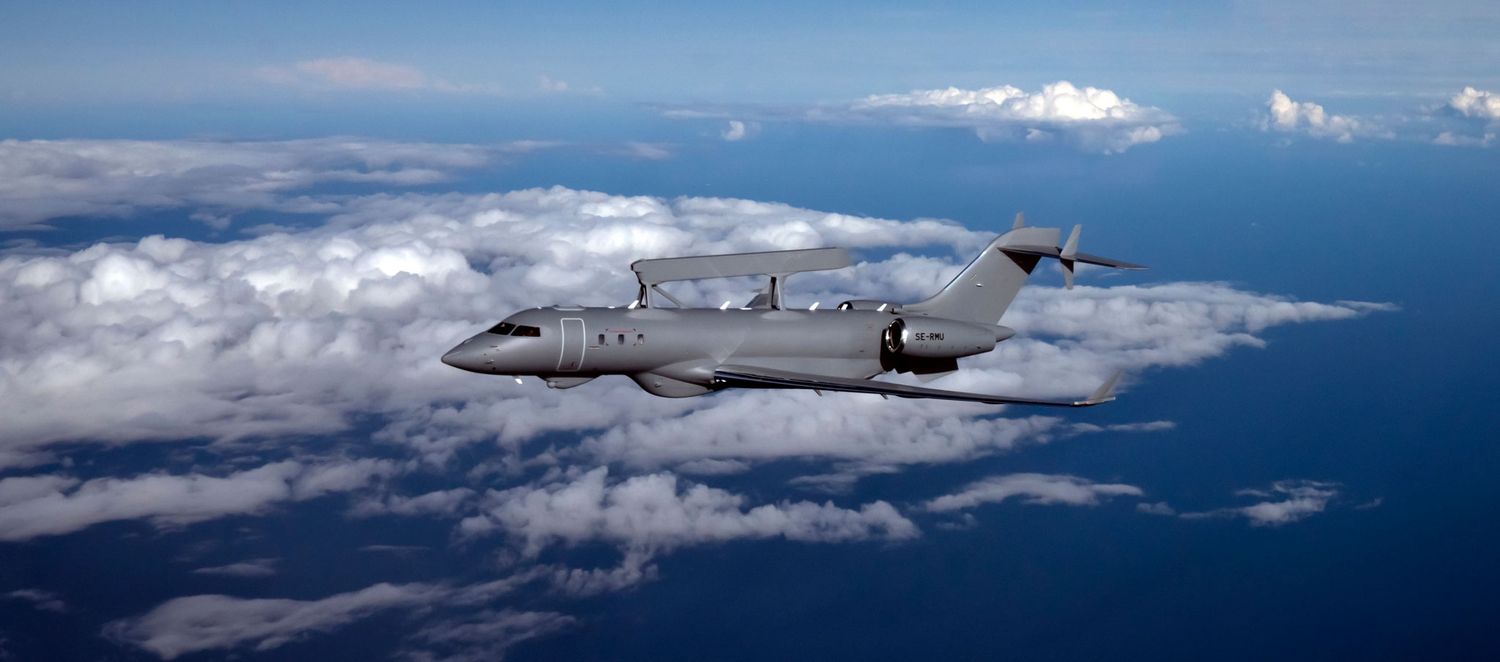KAI and SAAB join forces to provide GlobalEye for South Korea’s AEW&C II program
To address the growing need for enhanced air surveillance in South Korea, Saab and KAI have joined forces to offer the GlobalEye for the AEW&C II program. The MoU will facilitate technology transfer and industrial cooperation.
The Republic of Korea Air Force (RoKAF) currently operates four Boeing E-7A AEW&C aircrafts, purchased from the U.S. between 2011 and 2012, which constitute its primary airborne early warning and surveillance assets. However, this capability is considered insufficient in the face of North Korea’s increasing missile activity. That is why South Korea’s Defense Acquisition Program Administration (DAPA) is moving forward with the Airborne Early Warning Program-II, which will seek to acquire more early warning aircraft through an international tender.
See also: Korean Air and L3Harris promote advanced AEW&C platform for South Korean Air Force
In order to meet the requirements of the AEW&C-II program, Saab and KAI sealed a strategic alliance during the recent edition of KADEX. The agreement, formalized through a Memorandum of Understanding (MoU), was signed by top executives from both companies.
Saab’s proposal for the Republic of Korea’s ongoing AEW&C II competition is the GlobalEye, the only advanced, future-ready AEW&C solution on the market that is in production, under contract and in operation. According to its manufacturer, GlobalEye offers higher availability, better sortie rate, longer missions, lower costs and superior performance to any current platform.

The MoU collaboration agreements relate to the transformation of the Global 6500 business jet into a GlobalEye AEW&C special mission aircraft. This includes airframe and aerodynamics modifications, system installation, testing and integration, and comes with a comprehensive training and technical assistance package to develop competencies in these areas. KAI would therefore be self-sufficient in performing future GlobalEye modifications, maintenance and repair.
“This MoU between Saab and KAI will increase critical radar technology competence, and create domestic capability and self-sustainability to secure strategic independence for the Republic of Korea in the airborne surveillance segment. In fact, GlobalEye is the only system that offers real technology transfer,” says Markus Borgljung, Vice President of Saab’s Business Area Surveillance.
“This program will be a stepping stone to expand the cooperative relationship between Saab and KAI, not only for the AEW&C II program but also any subsequent domestic AEW&C program and future special mission aircraft programs in Korea. Through the technology transfer, we will strengthen our capabilities for future independent domestic research and development for future Special Mission Aircraft programs,” says Chongho Yoon, Senior Executive Vice President and General Manager of Aircraft Program Division, KAI.
The agreement provides for a comprehensive technology transfer that will enable KAI not only to modify and maintain GlobalEye aircraft, but also to leverage the knowledge gained to develop future special mission platforms. This transfer will enable the South Korean aerospace company to design, modify and integrate complex systems into aircraft, reducing its external dependence and strengthening the Korean defense industry.


Comentarios
Para comentar, debés estar registrado
Por favor, iniciá sesión